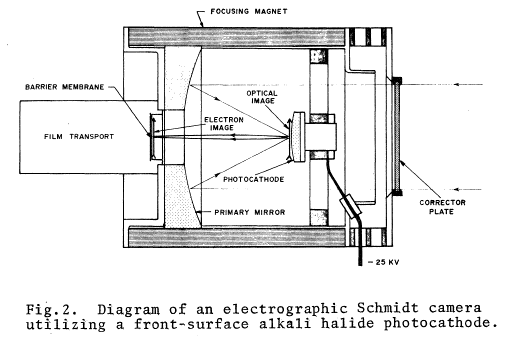This answer links to history.nasa.gov's SP-404 Skylab's Astronomy and Space Sciences. In what looks like chapter 2, page 14 there is mention of Skylab's electrographic camera, shown below.
In the image I see what looks like a Cassegrain optical telescope except that there are also electron trajectories shown and a magnetic field.
Question: How did Skylab's electrographic ultraviolet camera work? How does the magnetic field contribute to the operation, and why is that curved surface that looks just like a Cassegrain hyperbolic secondary mirror actually curved?

